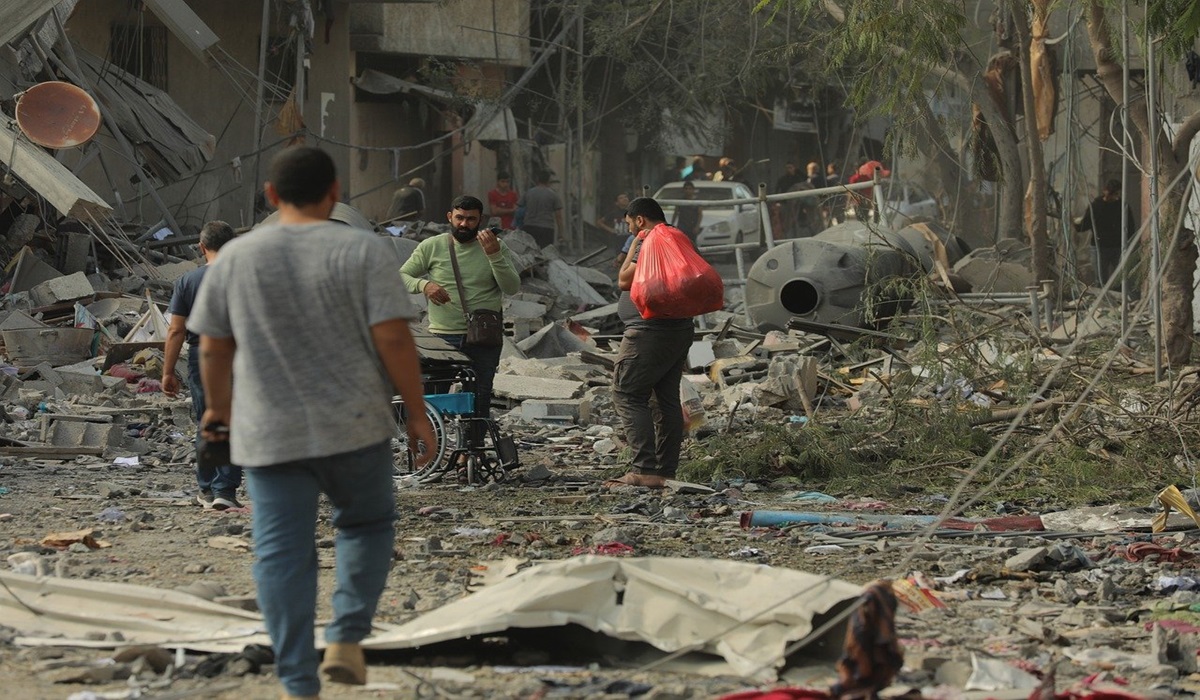If There Are Only 20,000 Hamas Members, Why Are 2 Million Palestinians Losing Their Homes?
- TDS News
- Trending
- Middle East
- November 5, 2024

Image Credit, Hosny Salah
The unfolding crisis in Gaza raises urgent questions about the justifications and limits of military action in densely populated civilian areas. With Hamas reportedly having a membership of around 20,000 to 40,000, it’s hard to reconcile the massive scale of destruction inflicted on Gaza’s infrastructure, which has affected nearly two million civilians, with the stated goal of targeting combatants. A morally and ethically complex situation, this conflict does not erase the realities of violence against Israelis—rockets have been fired into Israel, hostages have been taken, and civilians and soldiers have lost their lives. However, the large-scale bombardment of Gaza by the Israeli Defense Forces (IDF), which includes homes, schools, hospitals, and essential civilian infrastructure, raises serious questions about proportionality and compliance with international humanitarian law.
The principle of proportionality, as outlined in the Geneva Conventions, mandates that any military response must avoid unnecessary suffering and should aim to distinguish between combatants and civilians. Yet, reports from Gaza, Lebanon, and even parts of Syria suggest extensive targeting of civilian spaces, leading to mass displacement, loss of life, and the obliteration of essential services and housing. Meanwhile, Israel has faced attacks mainly directed at military installations, with minimal reports of equivalent civilian displacement or infrastructure destruction. This sharp disparity in impact prompts a pressing examination of whether the response remains within the bounds of international law or has escalated beyond proportionate measures.
One of the main factors behind this lack of accountability is the ongoing support Israel receives from powerful allies, primarily the United States and Germany, which are substantial suppliers of arms. As long as these countries continue to support and fund Israel’s military operations without demanding adherence to international legal standards, there is little pressure to change these practices. This dynamic creates an environment in which military action may proceed unchecked, regardless of international outcry or the humanitarian toll on the ground. When it comes to questions about enforcement of international law, however, political alliances often override the mechanisms designed to protect civilians and ensure accountability, which has left the region in a perpetual state of crisis.
On the other hand, Hamas, Hezbollah and other groups operating in Gaza and parts of Lebanon and Syria are known to receive significant funding, training, and military support from Iran. This backing allows these groups to maintain their operations and military capabilities despite the extensive resources required. Iran’s involvement is part of its broader strategy to exert influence in the region, countering the interests of Israel and its allies, particularly the United States. This relationship has fueled concerns that the conflict is not only a local struggle but also a proxy battle shaped by larger geopolitical interests and rivalries across the Middle East.
The roots of this conflict, often overshadowed in discussions focused on immediate violence, run deep. This is not a war that began on October 7, 2023. Its origins trace back over decades of complex interactions, including wars, occupation, blockades, and various peace efforts that have, at best, been only temporary solutions. For many Palestinians, daily life under occupation and restrictions amounts to a long-standing siege, and without addressing these underlying grievances, the violence is likely to continue indefinitely. True peace will remain elusive until these historical issues are confronted and genuinely resolved.
A peaceful future requires a comprehensive approach that respects the rights and sovereignty of both Palestinians and Israelis. Many advocates suggest that a two-state solution, achieved without external interference, may be the only sustainable way to ensure freedom and safety for all people in the region. Such a solution must involve addressing occupation, ensuring human rights, and promoting economic and social stability for both sides. Furthermore, political leadership changes, including the potential departure of Israel’s current administration under Benjamin Netanyahu, and some ranking members of Hamas, are seen by many as essential to advancing this vision, as leadership plays a critical role in shaping both policy and peace efforts.
Discussing these issues remains challenging. There’s a palpable fear that voicing concerns over Gaza’s treatment could result in accusations of antisemitism. Yet, the same hesitancy is often absent when condemning actions seen as “Islamophobic” or dismissive of Palestinian suffering. A balanced and humane conversation about the crisis is essential and should include all parties’ voices, aiming for a future where Israelis and Palestinians can live freely and securely without fear or persecution.








